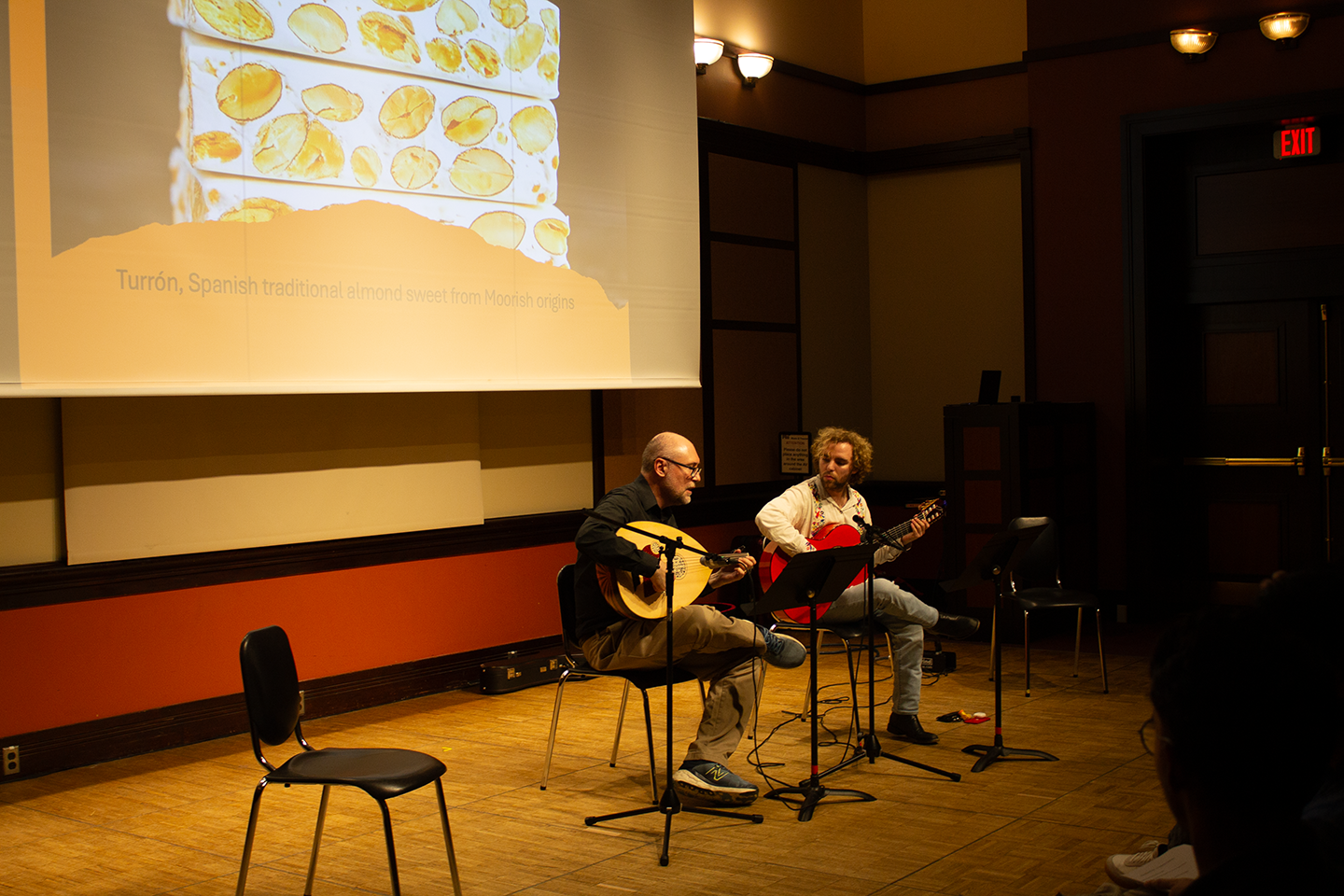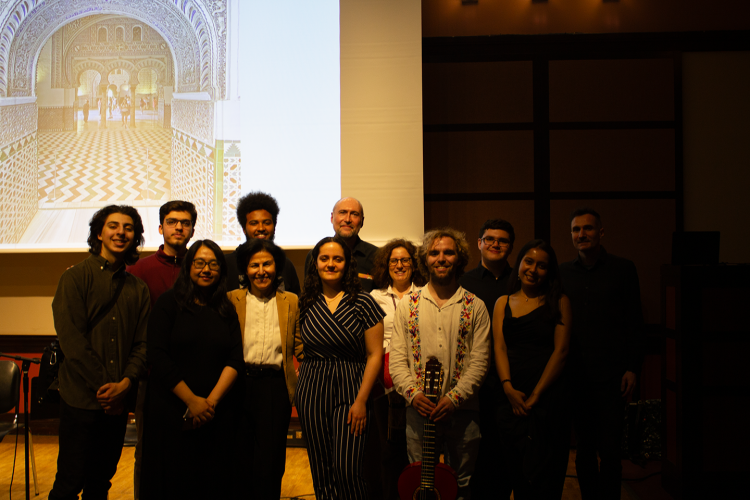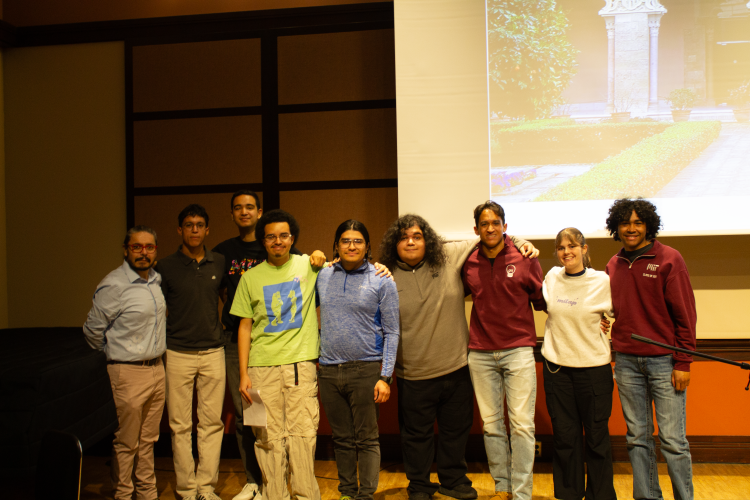
Tiny, jewel-box-like Killian Hall seats one hundred and forty, and is usually used for music recitals, manuscript readings, and doctoral presentations. On the evening of April 4th, 2025, it bustled with students and their friends and families, occasionally seeming larger than it was when the background slide show briefly showed expansive landscapes or monumental architecture. The slide show—student-curated—was, like the rest of the evening, devoted to the culture and cultural products of Al-Andalus, the region of Spain and Portugal which was under Islamic Arab rule between 711 and 1492 C.E.. Al-Andalus bore witness to a dramatic flowering of arts and culture due to the unusual diversity and cross-pollination of peoples and creeds living peacefully in the area.
For more than a year, Arabic students studying with Muna Bruce, Spanish students studying with Javier Barroso, and members of the Music & Theater Arts departments worked in collaboration to produce a presentation called Melodious Ties: The Legacy of Al-Andalus – A Cross-Cultural Celebration of Music and Language.
In addition to curating the slides, the students arranged a sequence of mini-lectures and performances which explained some of the history of the rich diversity of al-Andalus, and then delved more deeply into the specifics of its linguistic legacy. Speakers explained the origin and characteristics of the muwashshah, an Arabic form of poetry performed to music, which was invented in Iberia in the 10th century CE, and which is still an important form in Arabic literature today. This kind of poem has refrains or stanzas which repeat over and over, until the final segment, the kharja or exit from the poem. The overall poem may be about love, wine, poetry, or many other subjects, and is generally in Arabic. The kharja intensifies and concentrates the feelings of the overall poem, and may be in other languages, such as—most relevantly here—Spanish.
This is where the musicians came in. Ozge Tekin, on the darbuka, a goblet-shaped drum, was joined by Garo Saraydarian on the oud, a stringed instrument resembling a lute; the two of them supported the stunning vocals of Protashya Nishat Fahmida in the performance of an entire muwashshah. As well as being beautiful for its own sake, this showcased the amount of repetition inherent to the form, and the way that this repetition actually increases the emotional impact of a piece by adding notes of desperation and inevitability.
Students finished the formal presentation by delivering poetic recitations of several kharjas, each in Spanish and then in English. These were also frequently dazzlingly emotional, ranging from earthy to heartbroken, touching on everything from sex to broken dreams to money and class, and the performers lived up to their material. Several other musical pieces, including flamenco guitar by Gabriel Nixon and an oud-guitar duet, were interspersed throughout, as well as individual student reflections on survivals from al-Andalus in today’s Spanish language, culture, architecture, and food.
Finally, presenters and audience mingled in the hallway reception area to eat an array of snacks and mezze, which included both baklava and churros—an appropriate and somewhat amusing juxtaposition of cultures.
True to Killian Hall’s traditional uses, the evening had elements of recital, manuscript reading, and doctoral presentation: art placed in its context to allow the audience to get more out of it, art being used as an example to illustrate the scholarly work being put into explaining that very art. None of the academic discussions, nor the music or poetry, would have been as interesting and emotionally effective to listen to without one another. The evening was a lovely example of what can happen when seemingly unrelated departments collaborate in the service of cross-disciplinary culture, in that way rather itself resembling as well as invoking the polyglot, and undoubtedly still present, spirit of al-Andalus.


